Visuals By: Umar Altaf
Text by: Anirudh Krishnan
Editor: Soumya Singhal
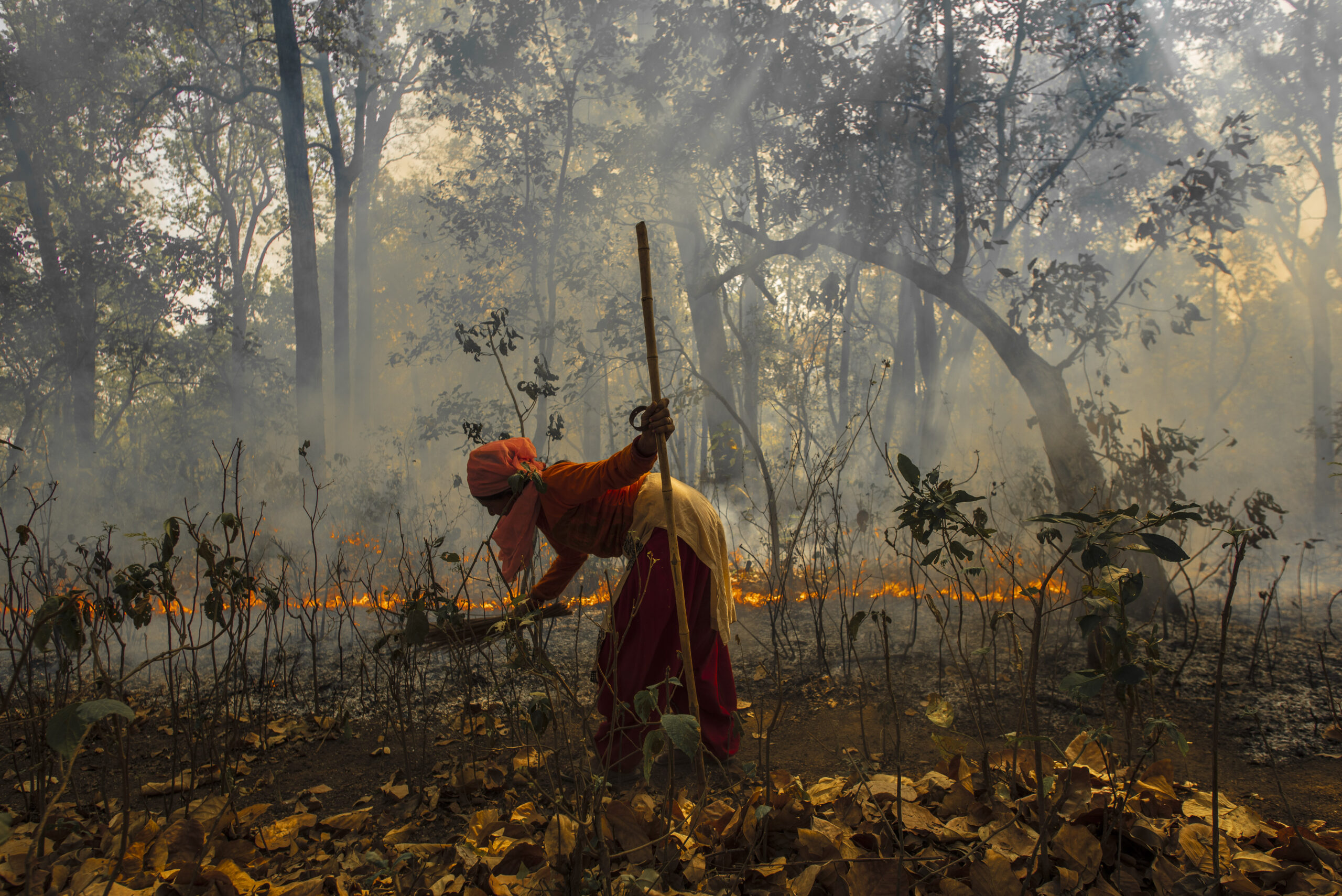
Ritu (name changed), 55, a resident of Bakrakote village in Uttarakhand, creates firebreaks by clearing leaves and making ditches to prevent forest fires from spreading.
Forest fires, also known as bushfires or vegetation fires, are the uncontrolled and widespread burning of plants and trees, mainly in forests. Forest fires may start due to natural and manmade reasons [1]. A United Nations Environment Program report on forest fires stated that human carelessness and lightning strikes might start forest fires, but the root cause of the problem lies in human-induced climate change, inefficient forest and land management, and rapid land-use change [2]. However, with increasing global temperatures due to global warming, forest fires have become much more common worldwide. Warmer climates, higher temperatures, and dry landscapes help create conditions suitable for forest fires to start and persist [3]. Forest fires have considerable environmental and social impacts. They can impact the long-term quality of rivers, lakes, streams, and other freshwater sources. Forest fires can also severely damage soil and lead to large-scale vegetation loss depending on the time of their incidence in the year. They also have immediate and long-term effects on air quality. As trees and leaves burn, large amounts of smoke and soot are released into the air. This polluted air can travel long distances and impact human health across a large area [4].
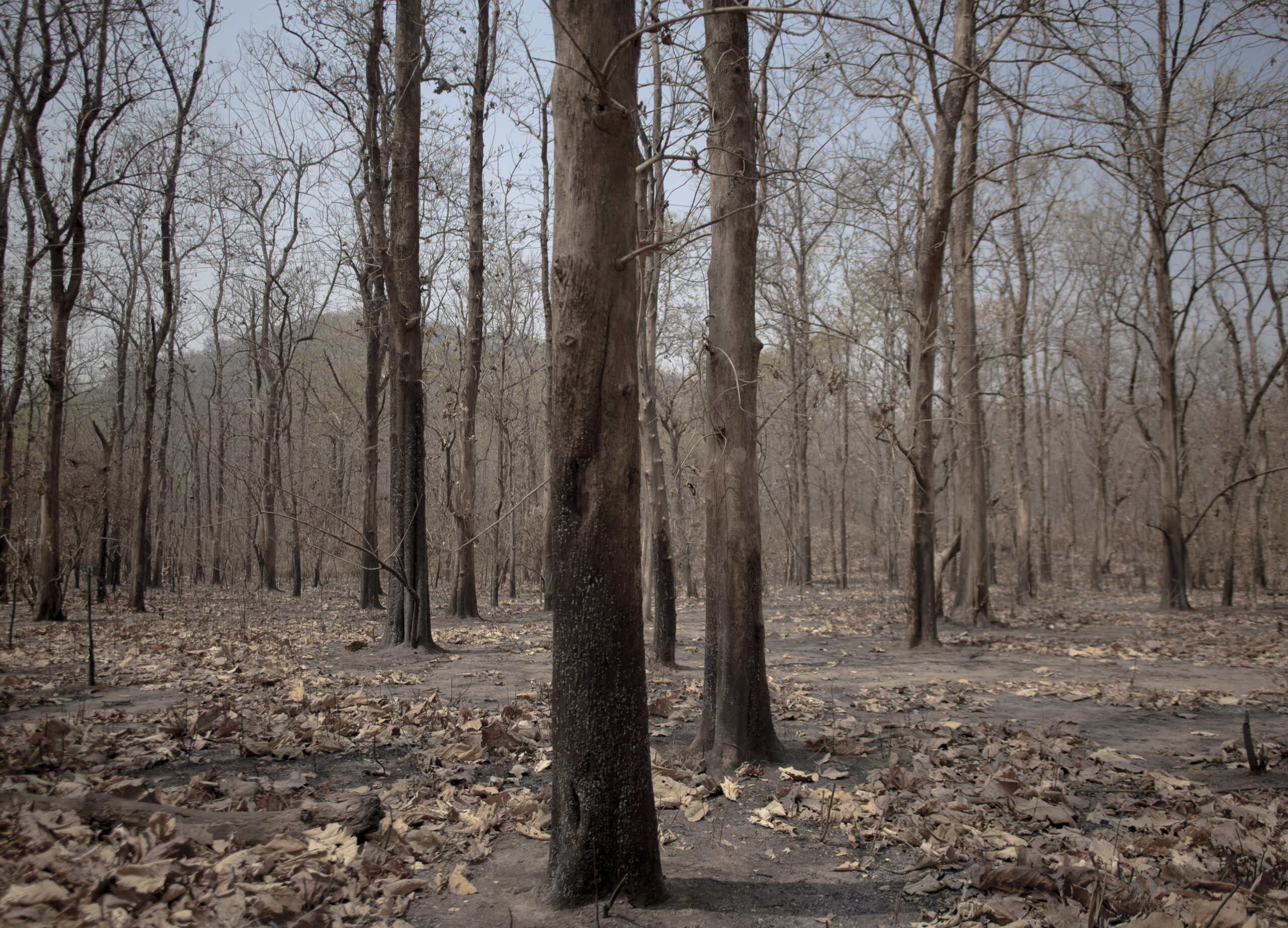
Burnt and barren trees caused by a fire in a forest range in Uttarakhand.
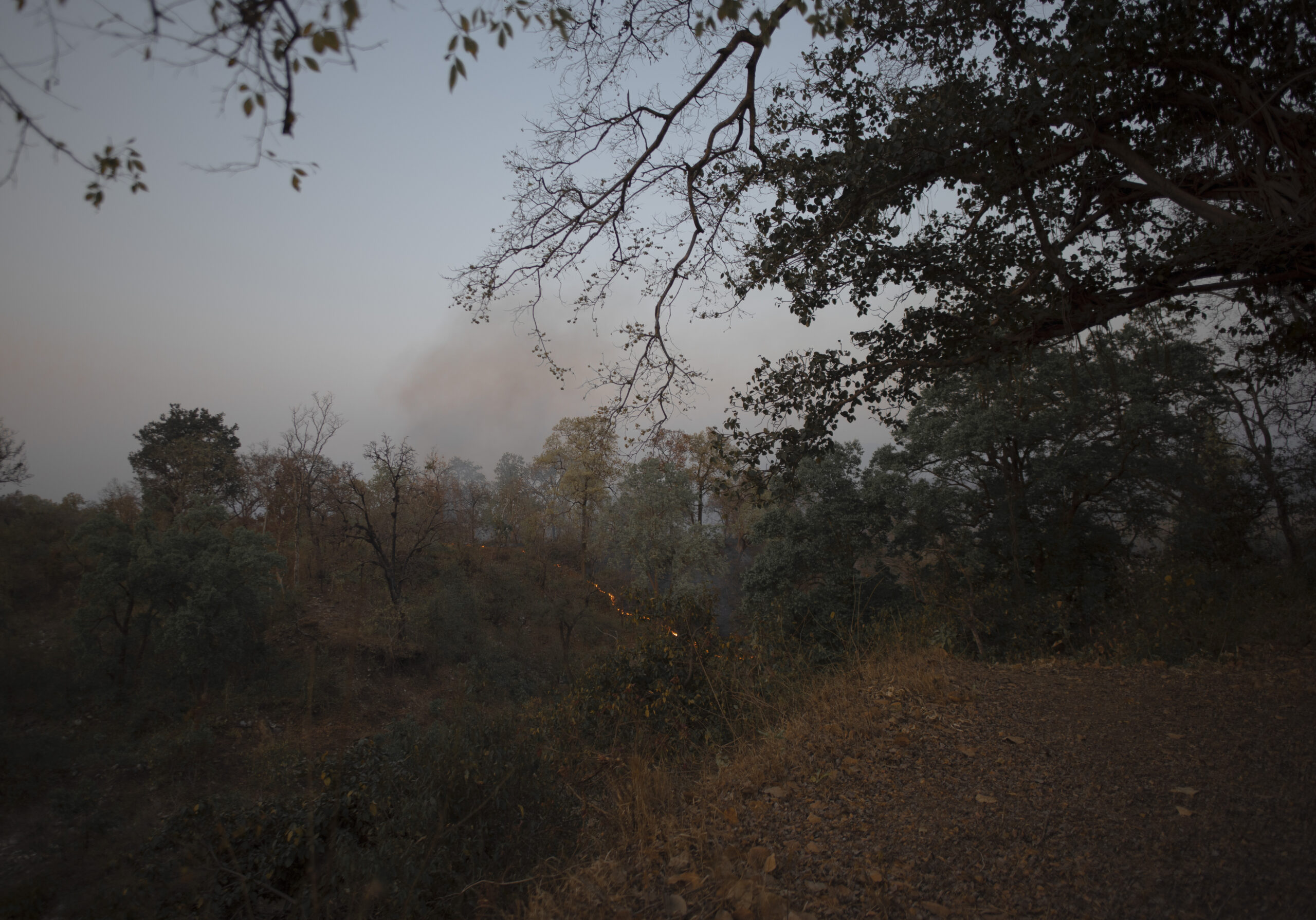
Fire spreading across a forest range in Uttarakhand.
Forest fires also have severe economic impacts. Property loss and damage are the most common impacts of forest fires. With the loss of property comes the displacement of people and loss of business and livelihood for those who depend on forests. Additionally, forest fires reduce tourism since tourists are discouraged from visiting forested areas like national parks and sanctuaries when smoke is present [5]. In India, forest dwellers who collect minor forest produce for sale are affected heavily by fires and incur massive losses [6].
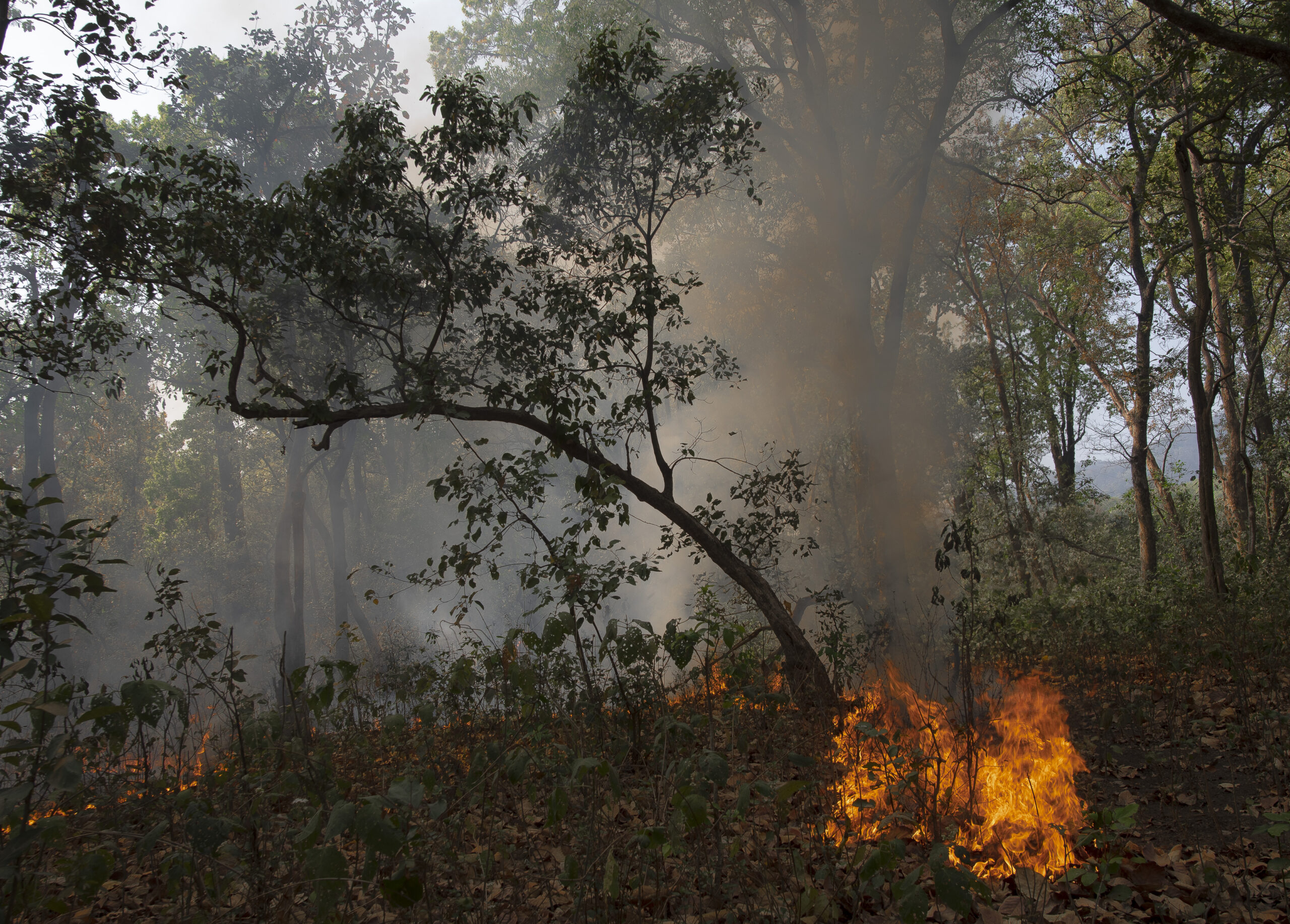
The base of a small tree caught fire.
In India, forest fires are the most common in the northern states of Uttarakhand and Himachal Pradesh. India reported 3,45,000 forest fires between November 2020 and June 2021, of which more than 20,000 were in Uttarakhand [7]. The most common type of forest fires in Uttarakhand are not crown fires that spread to the top of the trees but ground fires fuelled by fallen pine needles.
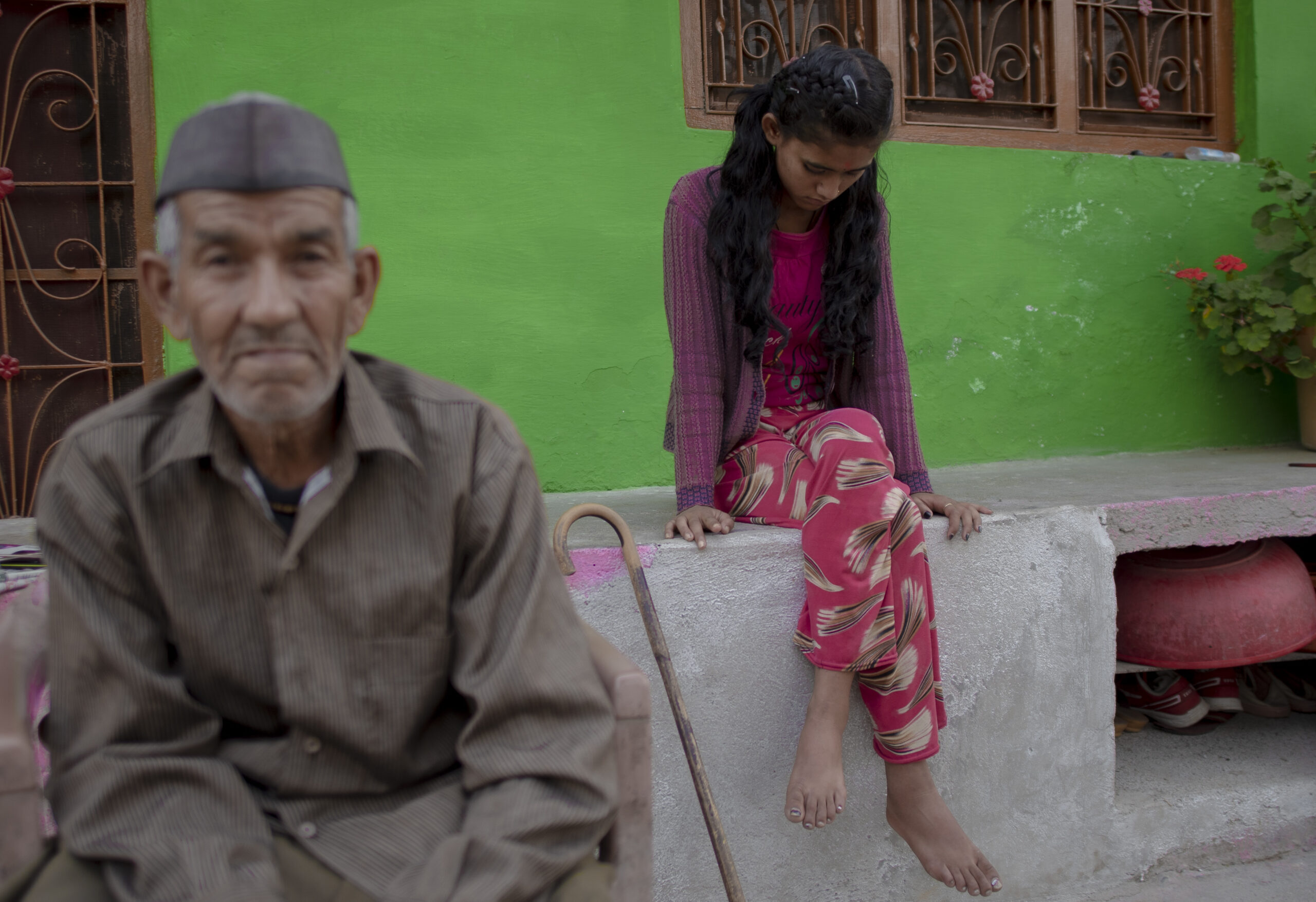
Ram (name changed), 79, a resident of Ramnagar and an asthma patient, says it is getting harder and harder to live in the village due to increasing pollution caused by forest fires.
Chir pine, responsible for retaining most of the green cover in Himachal Pradesh and Uttarakhand, is a conifer with slender, evergreen leaves. It is found in abundance in the lower altitudes of the two states. The needles shed by chir pine catch fire easily and are responsible for the spread of ground fires. The tree is resilient against these ground fires, owing to its thick bark. Even though these periodic fires are essential in maintaining the ecological balance and lowering the probability of large-scale fires, recurring fires gravely pollute the air [8].
Over the years, forest fires have only increased in Uttarakhand. Locals in the state have routinely expressed their disappointment in forest management systems since chir pine trees are water-intensive and responsible for forest and land fires. These fires spread and damage fruit-bearing and shade-providing trees, which is disastrous for the ecology and the environment [9].
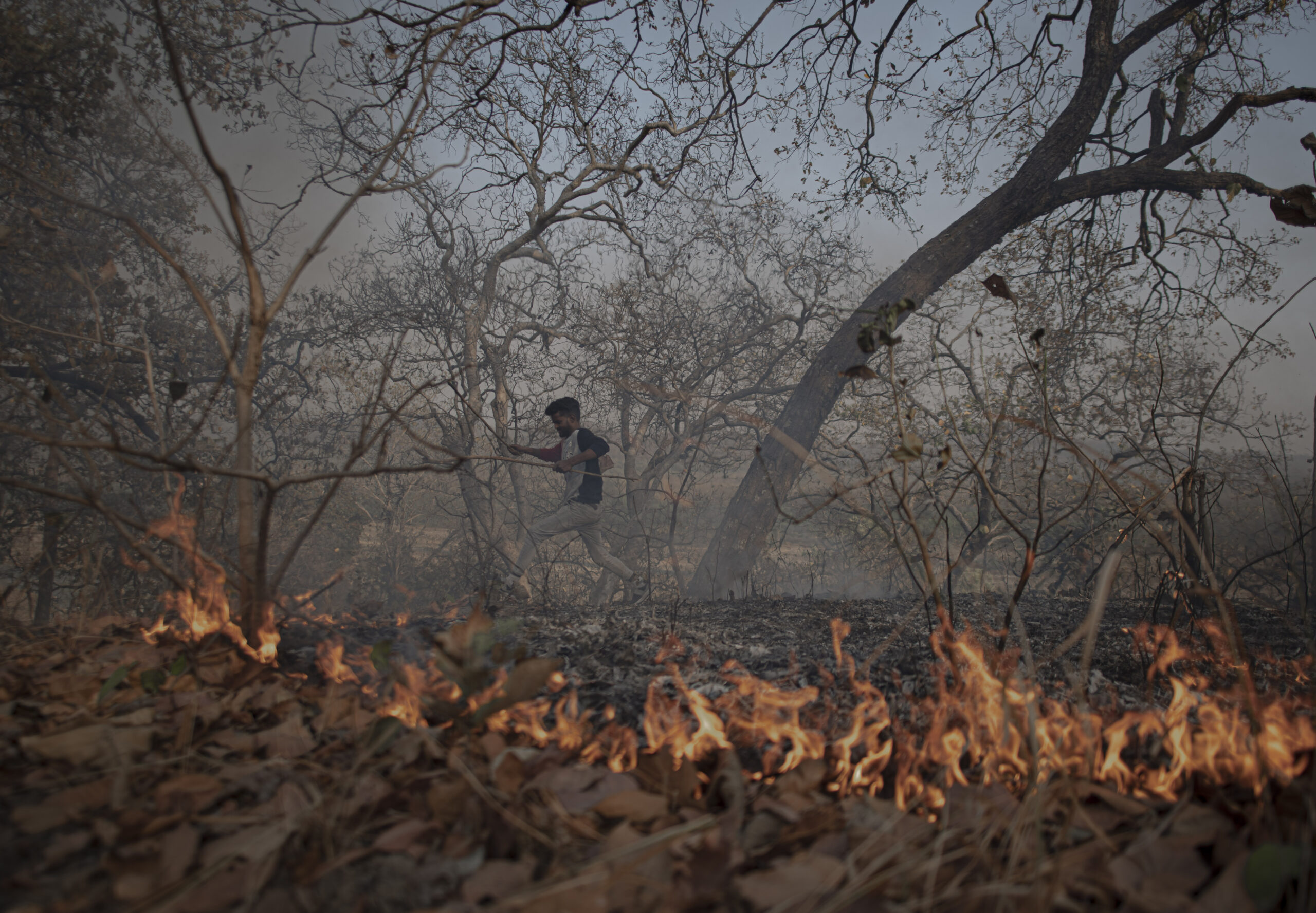
As blazing fire engulfs the forest, Aman, a resident of a nearby village, tries to escape and return to his village.
Aman, 18, mentions, “I felt scared and helpless watching the trees burning in front of me. However, this is an ongoing problem, and it is so disturbing to see it increasing every year”. Residents of villages close to forested areas have routinely brought up the issue of forest fires to the authorities, but no concrete measures have been enforced. S.P. Nautiyal, a resident of Semandidhar Village in the Tehri district of Uttarakhand, has consistently written letters to the Chief Minister, the Prime Minister’s Office, and the Uttarakhand Forest Department requesting them to clear the chir pine trees, but in vain.
Owing to the state and central governments’ ignorance, the locals have long taken matters into their own hands. Sonia, a Kharkiya Village resident, is a member of the Mahila Mangal Dal. The Dal is a self-help group of women who routinely douse forest fires in Kharkiya and other neighbouring regions. She mentions, “When we get information about forest fires, we gather a group and proceed to douse the fire immediately”. The group members also help out neighbouring villages in putting out local forest fires and are constantly connected over WhatsApp for efficient communication [10].
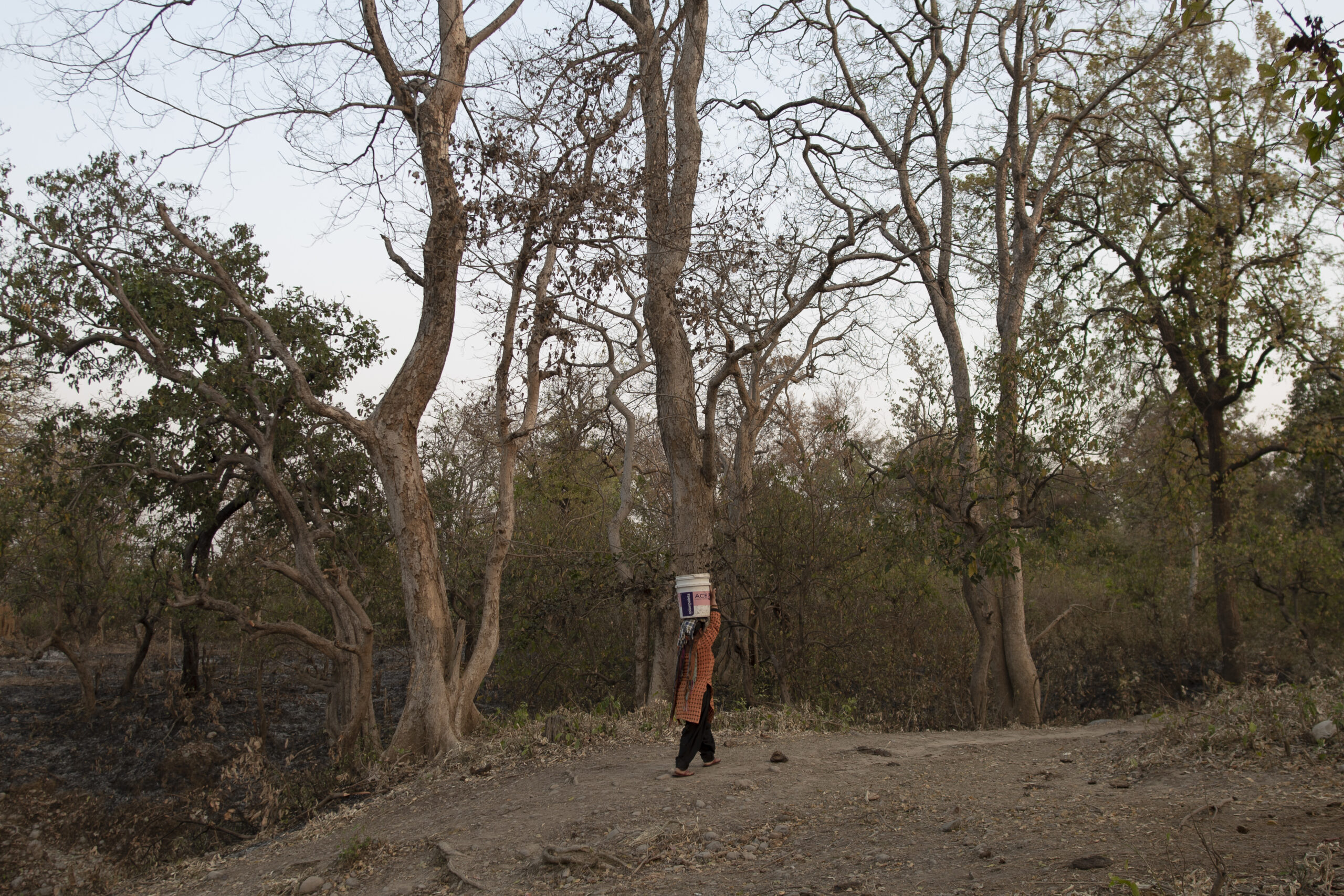
With forests ablaze, a woman from the nearby village fetches a bucket of water.
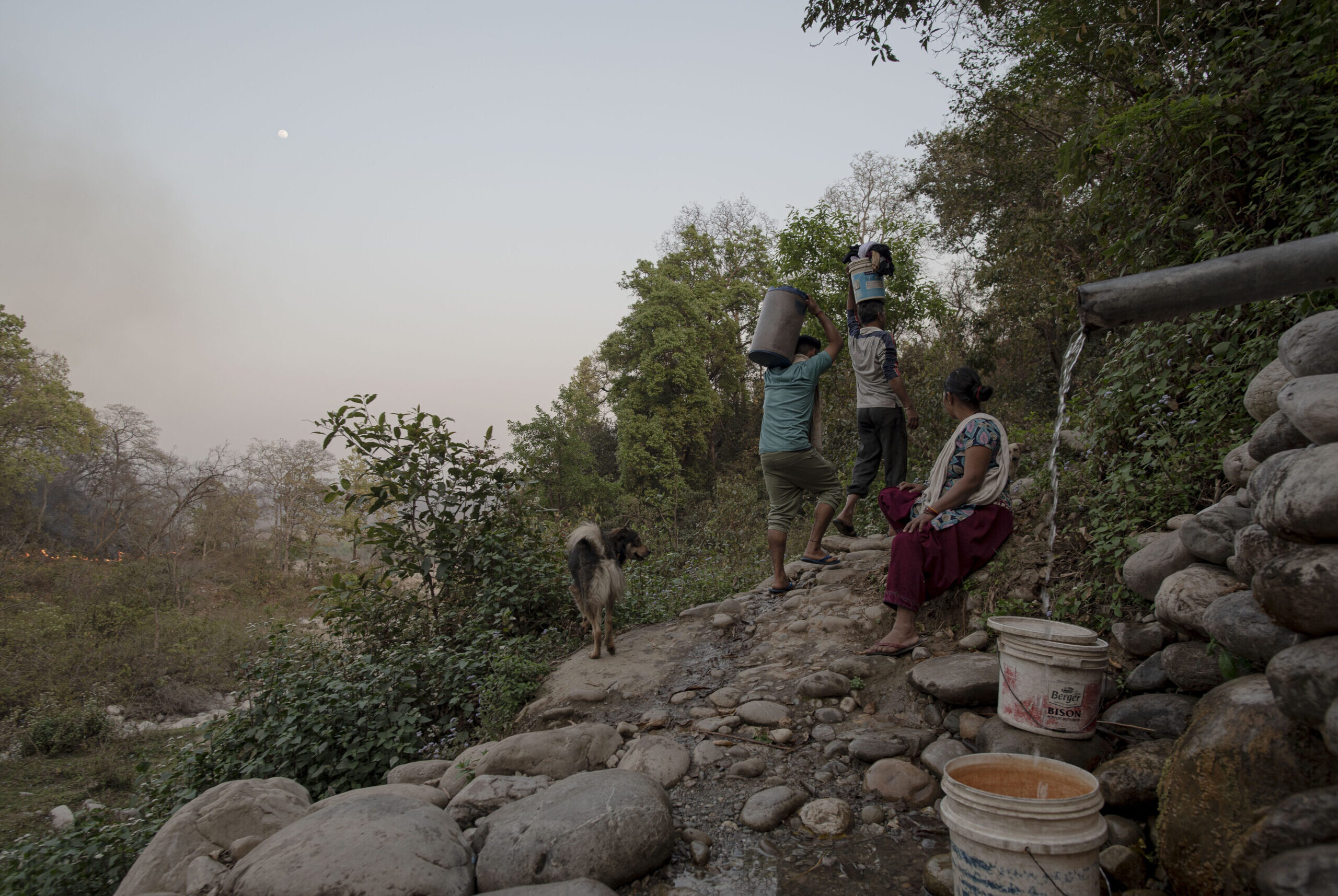
To put out the forest fires, a group of volunteers fill and carry containers of water.
Sonia further adds, “The forest is our life. It should remain the same for the future generations as it has been for us.” The livelihoods of several indigenous communities in Uttarakhand depend on forests, making it imperative that the state and central governments control the spread of fires. Government efforts must focus on enforcing land and forest management measures to prevent forest fires better and protect the environment.
Endnotes:
[1] Krishnan, A. (2022, June 29). What are forest fires? The good, the bad, and the ugly side of forest fires. Mongabay. https://india.mongabay.com/2022/06/explainer-the-good-the-bad-and-the-ugly-side-of-forest-fires/.
[2] United Nations Environment Programme. (2022). Spreading like Wildfire – The Rising Threat of Extraordinary Landscape Fires. https://www.unep.org/resources/report/spreading-wildfire-rising-threat-extraordinary-landscape-fires.
[3] MacCarthy, J., Tyukavina, S., Weisse, M., & Harris, N. (2022, August 17). New Data Confirms: Forest Fires Are Getting Worse. World Resources Institute. https://www.wri.org/insights/global-trends-forest-fires.
[4] Nelson, R. (2019, April). The Environmental Impact of Forest Fires. Untamed Science. https://untamedscience.com/blog/the-environmental-impact-of-forest-fires/.
[5] Reiff, N. (2022, November 22). How Fire Season Affects the Economy. Investopedia. https://www.investopedia.com/how-fire-season-affects-the-economy-5194059.
[6] Mishra, M. C. (2021, May 28). With increased forest fires, along with Covid, forest dwellers face the heat. Mongabay. https://india.mongabay.com/2021/05/with-more-forest-fires-and-an-ongoing-pandemic-forest-dwellers-feel-the-heat-this-year/.
[7] Pandey, K. (2022, January 14). Forest Survey Report 2021: Forest fire counts up 2.7 times. DownToEarth. https://www.downtoearth.org.in/news/forests/forest-survey-report-2021-forest-fire-counts-up-2-7-times-81123
[8] Awasthi, P. (2022, June 26). Why forest fires are ravaging Uttarakhand. The Week. https://www.theweek.in/theweek/statescan/2022/06/24/why-forest-fires-are-ravaging-uttarakhand.html.
[9] Singh, V. (2022, May 18). Locals Blame Chirpine Trees For Forest Fires In Uttarakhand, Experts Disagree. Indiaspend. https://www.indiaspend.com/earthcheck/locals-blame-chirpine-trees-for-forest-fires-in-uttarakhand-experts-disagree-818176.
[10] Sebastian, S. (2022, September 16). Firefighters of Sitlakhet. CEEW. https://www.ceew.in/how-communities-in-uttarakhand-are-combating-forest-fires.
